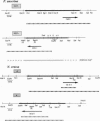Abstract
Podospora anserina and Neurospora crassa, two filamentous heterothallic ascomycetes, have a single mating-type locus with two alternate forms called mat+ and mat- and A and a, respectively. Mating type controls entry into the sexual cycle, events subsequent to fertilization, and, in N. crassa, prevents the formation of mixed mating-type heterokaryons. The mating types of these two organisms display similarity in their DNA structure and in the encoded polypeptides involved in fertilization. Here we show that this molecular similarity reflects a functional homology with respect to mating identity. Transformation experiments show that the N. crassa mating-type genes can provide the fertilization functions in P. anserina strains devoid of mating specificity as well as in mat+ and mat- strains. Reciprocally, the introduction of P. anserina mating-type genes confers mating activity in N. crassa. Functional identity between the mating types is not observed for vegetative incompatibility or for post-fertilization events such as meiosis and ascosporogenesis.
Full text
PDF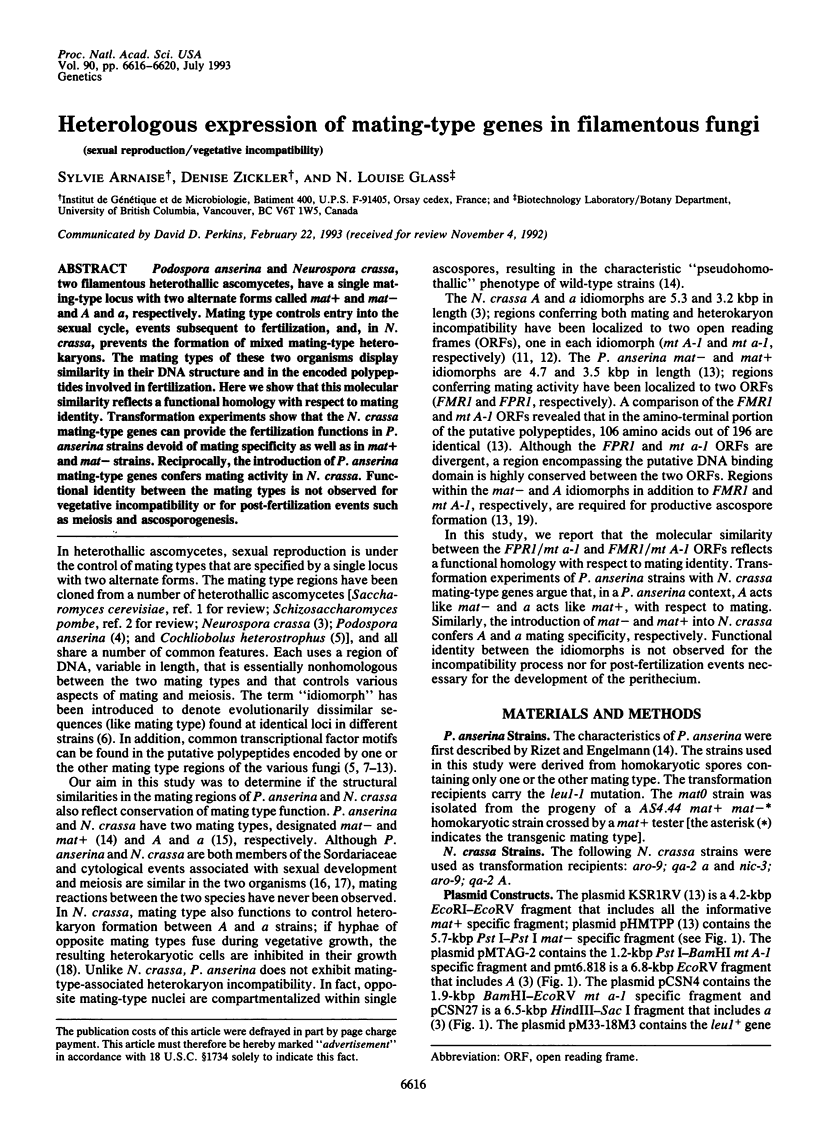

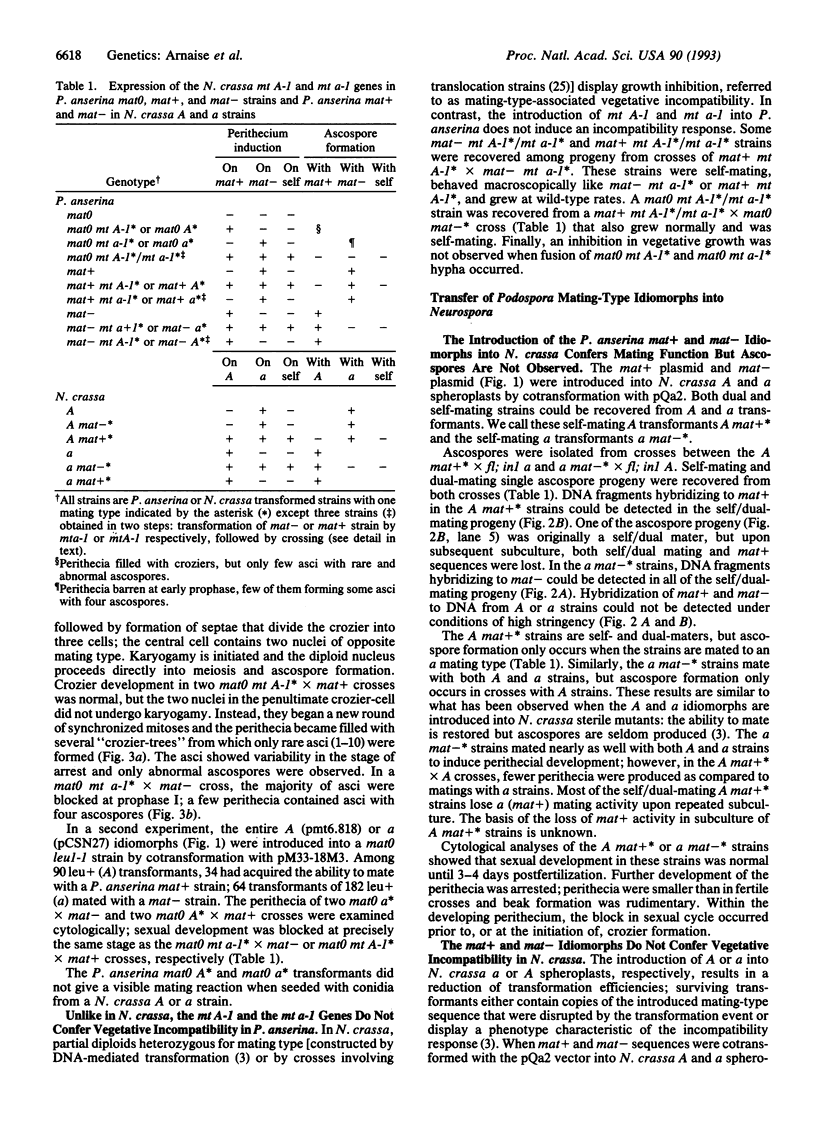
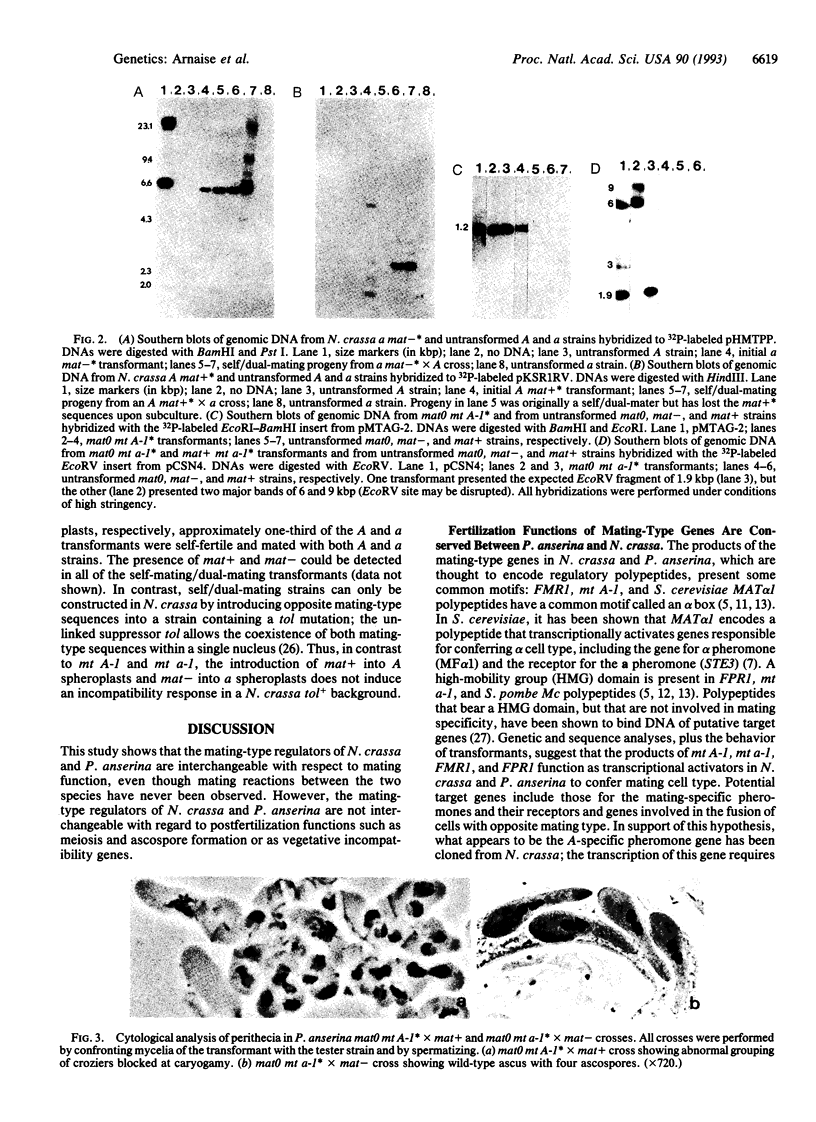
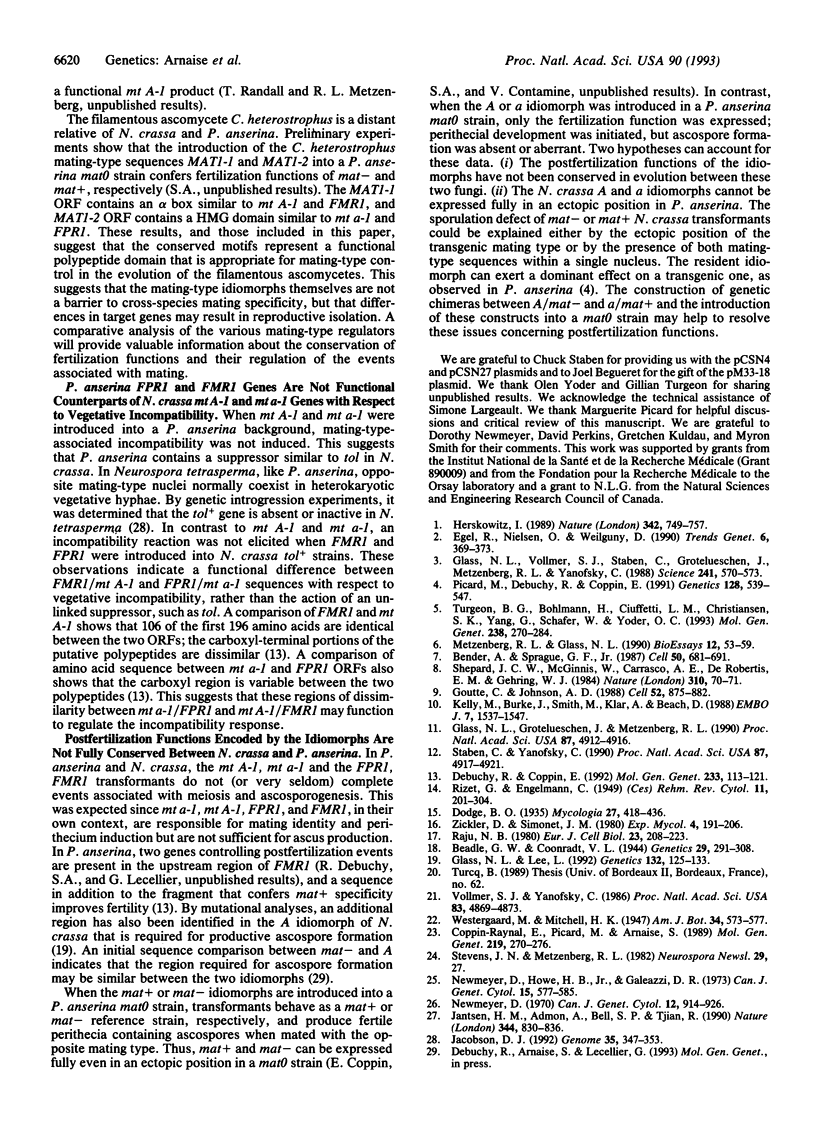
Images in this article
Selected References
These references are in PubMed. This may not be the complete list of references from this article.
- Beadle G W, Coonradt V L. Heterocaryosis in Neurospora Crassa. Genetics. 1944 May;29(3):291–308. doi: 10.1093/genetics/29.3.291. [DOI] [PMC free article] [PubMed] [Google Scholar]
- Coppin-Raynal E., Picard M., Arnaise S. Transformation by integration in Podospora anserina. III. Replacement of a chromosome segment by a two-step process. Mol Gen Genet. 1989 Oct;219(1-2):270–276. doi: 10.1007/BF00261187. [DOI] [PubMed] [Google Scholar]
- Debuchy R., Coppin E. The mating types of Podospora anserina: functional analysis and sequence of the fertilization domains. Mol Gen Genet. 1992 May;233(1-2):113–121. doi: 10.1007/BF00587568. [DOI] [PubMed] [Google Scholar]
- Egel R., Nielsen O., Weilguny D. Sexual differentiation in fission yeast. Trends Genet. 1990 Nov;6(11):369–373. doi: 10.1016/0168-9525(90)90279-f. [DOI] [PubMed] [Google Scholar]
- Glass N. L., Grotelueschen J., Metzenberg R. L. Neurospora crassa A mating-type region. Proc Natl Acad Sci U S A. 1990 Jul;87(13):4912–4916. doi: 10.1073/pnas.87.13.4912. [DOI] [PMC free article] [PubMed] [Google Scholar]
- Glass N. L., Lee L. Isolation of Neurospora crassa A mating type mutants by repeat induced point (RIP) mutation. Genetics. 1992 Sep;132(1):125–133. doi: 10.1093/genetics/132.1.125. [DOI] [PMC free article] [PubMed] [Google Scholar]
- Glass N. L., Vollmer S. J., Staben C., Grotelueschen J., Metzenberg R. L., Yanofsky C. DNAs of the two mating-type alleles of Neurospora crassa are highly dissimilar. Science. 1988 Jul 29;241(4865):570–573. doi: 10.1126/science.2840740. [DOI] [PubMed] [Google Scholar]
- Herskowitz I. A regulatory hierarchy for cell specialization in yeast. Nature. 1989 Dec 14;342(6251):749–757. doi: 10.1038/342749a0. [DOI] [PubMed] [Google Scholar]
- Jacobson D. J. Control of mating type heterokaryon incompatibility by the tol gene in Neurospora crassa and N. tetrasperma. Genome. 1992 Apr;35(2):347–353. doi: 10.1139/g92-053. [DOI] [PubMed] [Google Scholar]
- Jantzen H. M., Admon A., Bell S. P., Tjian R. Nucleolar transcription factor hUBF contains a DNA-binding motif with homology to HMG proteins. Nature. 1990 Apr 26;344(6269):830–836. doi: 10.1038/344830a0. [DOI] [PubMed] [Google Scholar]
- Kelly M., Burke J., Smith M., Klar A., Beach D. Four mating-type genes control sexual differentiation in the fission yeast. EMBO J. 1988 May;7(5):1537–1547. doi: 10.1002/j.1460-2075.1988.tb02973.x. [DOI] [PMC free article] [PubMed] [Google Scholar]
- Metzenberg R. L., Glass N. L. Mating type and mating strategies in Neurospora. Bioessays. 1990 Feb;12(2):53–59. doi: 10.1002/bies.950120202. [DOI] [PubMed] [Google Scholar]
- Newmeyer D. A suppressor of the heterokaryon-incompatibility associated with mating type in Neurospora crassa. Can J Genet Cytol. 1970 Dec;12(4):914–926. doi: 10.1139/g70-115. [DOI] [PubMed] [Google Scholar]
- Newmeyer D., Howe H. B., Jr, Galeazzi D. R. A search for complexity at the mating-type locus of Neurospora crassa. Can J Genet Cytol. 1973 Sep;15(3):577–585. doi: 10.1139/g73-069. [DOI] [PubMed] [Google Scholar]
- Picard M., Debuchy R., Coppin E. Cloning the mating types of the heterothallic fungus Podospora anserina: developmental features of haploid transformants carrying both mating types. Genetics. 1991 Jul;128(3):539–547. doi: 10.1093/genetics/128.3.539. [DOI] [PMC free article] [PubMed] [Google Scholar]
- Shepherd J. C., McGinnis W., Carrasco A. E., De Robertis E. M., Gehring W. J. Fly and frog homoeo domains show homologies with yeast mating type regulatory proteins. Nature. 1984 Jul 5;310(5972):70–71. doi: 10.1038/310070a0. [DOI] [PubMed] [Google Scholar]
- Staben C., Yanofsky C. Neurospora crassa a mating-type region. Proc Natl Acad Sci U S A. 1990 Jul;87(13):4917–4921. doi: 10.1073/pnas.87.13.4917. [DOI] [PMC free article] [PubMed] [Google Scholar]
- Turgeon B. G., Bohlmann H., Ciuffetti L. M., Christiansen S. K., Yang G., Schäfer W., Yoder O. C. Cloning and analysis of the mating type genes from Cochliobolus heterostrophus. Mol Gen Genet. 1993 Apr;238(1-2):270–284. doi: 10.1007/BF00279556. [DOI] [PubMed] [Google Scholar]
- Vollmer S. J., Yanofsky C. Efficient cloning of genes of Neurospora crassa. Proc Natl Acad Sci U S A. 1986 Jul;83(13):4869–4873. doi: 10.1073/pnas.83.13.4869. [DOI] [PMC free article] [PubMed] [Google Scholar]



